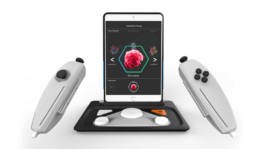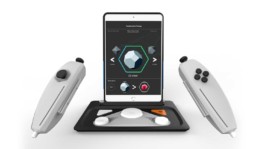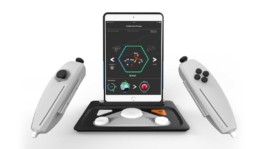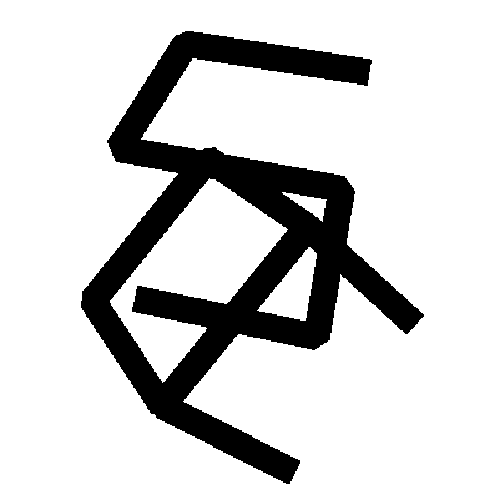Nanoteer
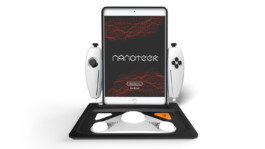
2017
UX/UI, Identity
In partnership with the California NanoSystems Institute (CNSI) at UCLA
Collaborators at UCLA:
Dr. Dean Ho
Theodore Kee
Darron Miya
Design Team:
Alan Lee
James Gildea
Joseph Park
Sherlan Abesamis
Roles: User experience, identity and visual design
Mentors: Brian Boyl and Jeff Higashi
Created for the Qualified Self class at ArtCenter College of Design
Full process book on Joseph Park's website
Nanoteer is a platform that introduces kids to the world of nanotechnology through a digital-physical hybrid toy that lets them experience science in the lab while learning about the breakthroughs that nanotechnology make possible in cancer research and treatment.
Problem
Exciting discoveries have been made in the application of nanotechnology to medicine, especially for cancer treatment. Despite the promise of this technology, there is not enough involvement in this field to adequately support further research and development.
Researchers at the California NanoSystems Institute at UCLA created a comic book to begin outreach to elementary school students, and approached ArtCenter College of Design for help in expanding their efforts into new media.
Key Trend Research
Low-tech learning:
a move away from the latest technology in learning
Hands-on tech:
Tech is increasingly using hands-on ways of engagement
Tactile learning:
a move towards learning through doing
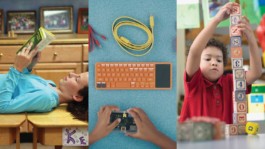
Product
Our solution was to create a game that would allow players to take on the role of a nanoscientist. In the game, players create nanodiamond medicines in the lab and fight cancer cells with a microscopic ship equipped with the medicines they create. The game is played with a set of controllers that can be used both in the lab and as the controls of the nanoship. The controllers mimic the pipette, a tool used to mix medicines.
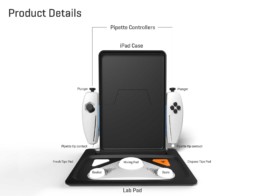
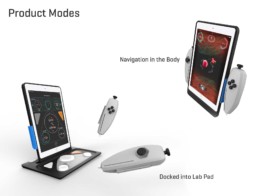
User Scenario
Players move between piloting the nanoship to fight cancer cells with nanodiamonds and synthesizing new medicines in the lab.
Game Modes
Key concepts of nanodiamond technology, cancer treatment, and the immune system were translated into game mechanics:
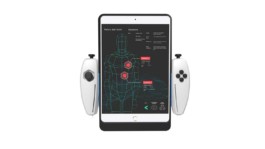
Patient Info
Provides an overview of patient symptoms and shows the location and severity of tumors throughout the body.
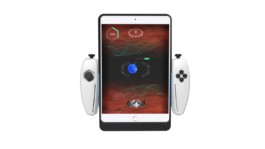
Scout Recon Mode
The player pilots the nanoship to scan T-Cells to gather clues on what medicines to use to fight the cancer. The player also gathers cancer cell samples to take back to the lab.
Science Concepts Used
T-Cells retain the memory of previous infections in the body, so were chosen as the way the player learns how to fight cancer cells.
Combination Therapy
After gathering information from T-Cells, the player chooses a cancer sample to use for testing medicine combinations on different nanodiamonds.
Science Concepts Used
Lab testing on cancer samples is one of the key ways nanoscientists discover which combinations of medicine work best.
Nanodiamonds come with different numbers of facets, which affects the amount of medicine they can carry on their surface.
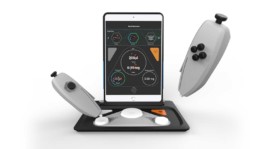
Build Medicine
After finding a suitable medicine ratio in the Combination Therapy Mode, the player uses the pipette and spoon controller to mix the solution they will use to fight the cancer cells in the body.
Science Concepts Used
The pipette and spoon mechanics come from the actual tasks nanoscientists do in the lab to create medicine mixtures.
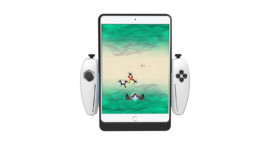
Vortex Mix
Once the player confirms their medicine mix, they go into the vortex mix mode, where they pilot the nanoship to load up as many medicine particles as possible before going into the body to fight cancer.
Science Concepts Used
This comes from the methods that CNSI scientists use to mix medicines in the lab.
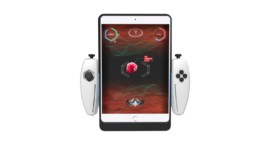
Battle Mode
In Battle Mode, the player navigates their way through the body to find cancer cells, and launch their nanodiamond medicine payload within the time limit. The payload’s effectiveness depends on the strength of the medicine they mixed in Build Medicine Mode.
Once the patient reaches the target cancer cell, they launch a medicine-loaded nanodiamond into the cancer cell. The game switches to the nanodiamond’s perspective, where the player must maneuver the diamond inside the cancer cell and reach the nucleus.
Science Concepts Used
Time limit:
Once nanodiamonds are injected into a patient’s body, they have a limited amount of time to work before getting flushed out of the body through the patient’s urine. Since nanodiamonds are chemically inert, they can be safely urinated out of the body without adverse side effects to the patient.
Maneuver inside cancer cell:
Nanodiamonds work through allowing cancer cells to consume them through phagocytosis. Once they are inside the cell, the nanodiamond is able to deliver its medicine payload.
Screen Designs
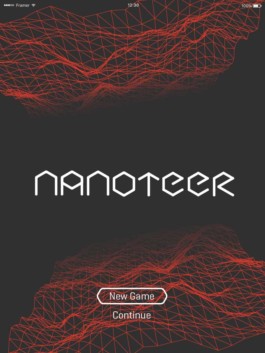
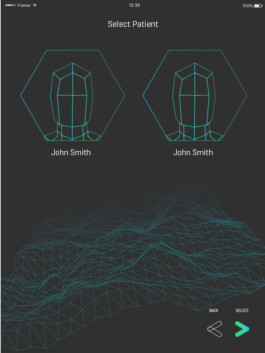
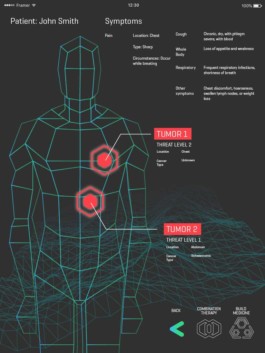
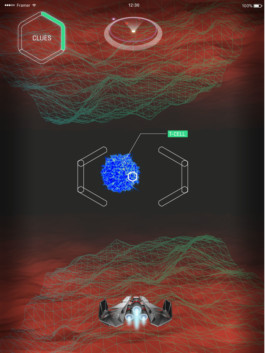
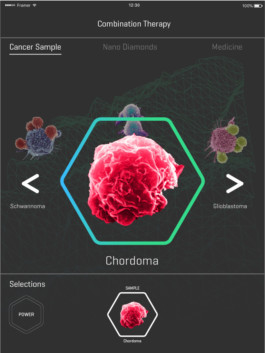
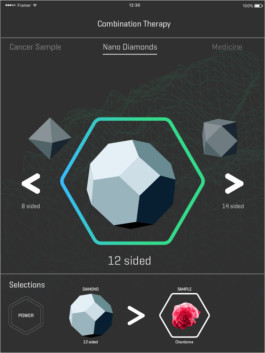
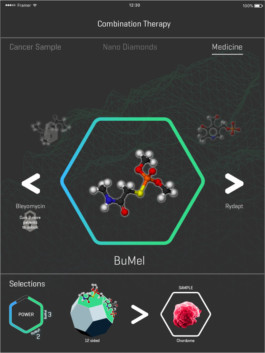
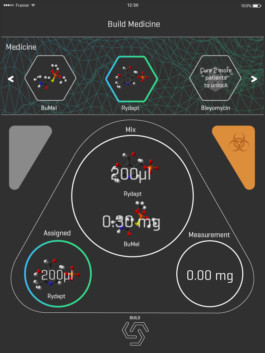
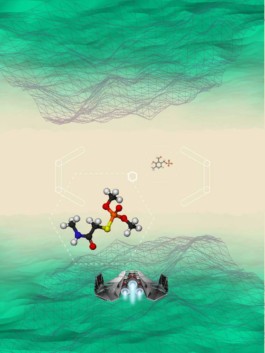
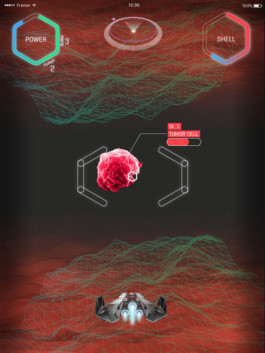
User Flow
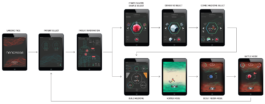
Nanoteer

2017
UX/UI, Identity
In partnership with the California NanoSystems Institute (CNSI) at UCLA
Collaborators at UCLA:
Dr. Dean Ho
Theodore Kee
Darron Miya
Design Team:
Alan Lee
James Gildea
Joseph Park
Sherlan Abesamis
Roles:
User experience, identity and visual design
Mentors:
Brian Boyl and Jeff Higashi
Nanoteer is a platform that introduces kids to the world of nanotechnology through a digital-physical hybrid toy that lets them experience science in the lab while learning about the breakthroughs that nanotechnology make possible in cancer research and treatment.
Problem
Exciting discoveries have been made in the application of nanotechnology to medicine, especially for cancer treatment. Despite the promise of this technology, there is not enough involvement in this field to adequately support further research and development.
Researchers at the California NanoSystems Institute at UCLA created a comic book to begin outreach to elementary school students, and approached ArtCenter College of Design for help in expanding their efforts into new media.
Key Trend Research

Low-tech learning:
a move away from the latest technology in learning
Hands-on tech:
Tech is increasingly using hands-on ways of engagement
Tactile learning:
a move towards learning through doing
Product
Our solution was to create a game that would allow players to take on the role of a nanoscientist. In the game, players create nanodiamond medicines in the lab and fight cancer cells with a microscopic ship equipped with the medicines they create. The game is played with a set of controllers that can be used both in the lab and as the controls of the nanoship. The controllers mimic the pipette, a tool used to mix medicines.


Game Modes
Key concepts of nanodiamond technology, cancer treatment, and the immune system were translated into game mechanics:

Patient Info
Provides an overview of patient symptoms and shows the location and severity of tumors throughout the body.

Scout Recon Mode
The player pilots the nanoship to scan T-Cells to gather clues on what medicines to use to fight the cancer. The player also gathers cancer cell samples to take back to the lab.
Science Concepts Used
T-Cells retain the memory of previous infections in the body, so were chosen as the way the player learns how to fight cancer cells.
Combination Therapy
After gathering information from T-Cells, the player chooses a cancer sample to use for testing medicine combinations on different nanodiamonds.
Science Concepts Used
Lab testing on cancer samples is one of the key ways nanoscientists discover which combinations of medicine work best.
Nanodiamonds come with different numbers of facets, which affects the amount of medicine they can carry on their surface.

Build Medicine
After finding a suitable medicine ratio in the Combination Therapy Mode, the player uses the pipette and spoon controller to mix the solution they will use to fight the cancer cells in the body.
Science Concepts Used
The pipette and spoon mechanics come from the actual tasks nanoscientists do in the lab to create medicine mixtures.

Vortex Mix
Once the player confirms their medicine mix, they go into the vortex mix mode, where they pilot the nanoship to load up as many medicine particles as possible before going into the body to fight cancer.
Science Concepts Used
This comes from the methods that CNSI scientists use to mix medicines in the lab.

Battle Mode
In Battle Mode, the player navigates their way through the body to find cancer cells, and launch their nanodiamond medicine payload within the time limit. The payload’s effectiveness depends on the strength of the medicine they mixed in Build Medicine Mode.
Once the patient reaches the target cancer cell, they launch a medicine-loaded nanodiamond into the cancer cell. The game switches to the nanodiamond’s perspective, where the player must maneuver the diamond inside the cancer cell and reach the nucleus.
Science Concepts Used
Time limit:
Once nanodiamonds are injected into a patient’s body, they have a limited amount of time to work before getting flushed out of the body through the patient’s urine. Since nanodiamonds are chemically inert, they can be safely urinated out of the body without adverse side effects to the patient.
Maneuver inside cancer cell:
Nanodiamonds work through allowing cancer cells to consume them through phagocytosis. Once they are inside the cell, the nanodiamond is able to deliver its medicine payload.
Screen Designs










User Flow

